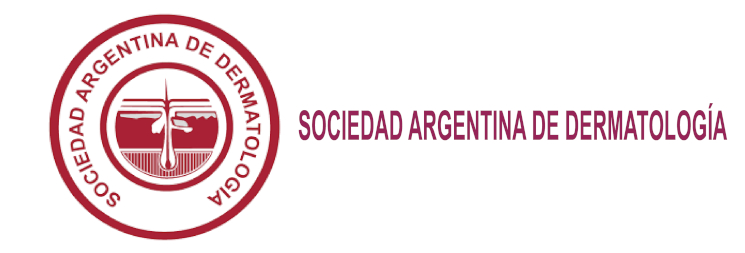Lysosomal storage diseases, diagnosis from skin lesions
Resumen
Lysosomal storage disorders form an heterogeneous group of more than 40 hereditary diseases due to the deficiency of various lysosomal enzymes in charge of the metabolization of substances inside lysosomes. These macromolecules are stored inside the organelles of multiple
organs and produce different symptoms. A great number of these diseases may have cutaneous manifestations, and in many cases the dermatologist may be the one to suggest the diagnosis.
We describe eight patients with lysosomal storage diseases diagnosed at our hospital during 2009 and 2010, on whom the cutaneous lesions were the clue to the diagnosis.
Five patients were diagnosed with Fabry disease (1 male and 4 females), one with type II mucopolysaccharidosis (male), one with b-mannosidosis (male) and the last one with galactosialidosis
(female). Angiokeratoma was the most frequent cutaneous manifestation, and the key to the diagnosis of Fabry disease, b-mannosidosis and galactosialidosis, while aberrant Mongolian spots on the trunk, some of which were lenticular, led us to the diiagnosis of type II mucopolyssacharidosis.
On four patients the diagnosis was confirmed through enzyme blood tests in filter paper, leukocytes and/or urine examination. On five patients -one of whom had already been diagnosed through biochemistry- a genetic study was also performed. Tests were performed on all the patients to evaluate the extension of the systemic disease and the need for specific treatment (for those diseases in which it is available). One of the patients with Fabry disease started the treatment soon after the diagnosis.
It is the aim of this paper to present different LSDs in which the role of the dermatologist in diagnosis proved fundamental. We would like to stress not only the academic importance of the discussion of these rare diseases but also the possibility of providing many patients with
specific enzyme replacement treatment.
(Dermatol. Argent., 2011, 17(3): 221-229).
Keywords: lysosomal storage disorders, cutaneous manifestations
Descargas
Publicado
Número
Sección
Licencia
El/los autor/es tranfieren todos los derechos de autor del manuscrito arriba mencionado a Dermatología Argentina en el caso de que el trabajo sea publicado. El/los autor/es declaran que el artículo es original, que no infringe ningún derecho de propiedad intelectual u otros derechos de terceros, que no se encuentra bajo consideración de otra revista y que no ha sido previamente publicado.
Le solicitamos haga click aquí para imprimir, firmar y enviar por correo postal la transferencia de los derechos de autor












